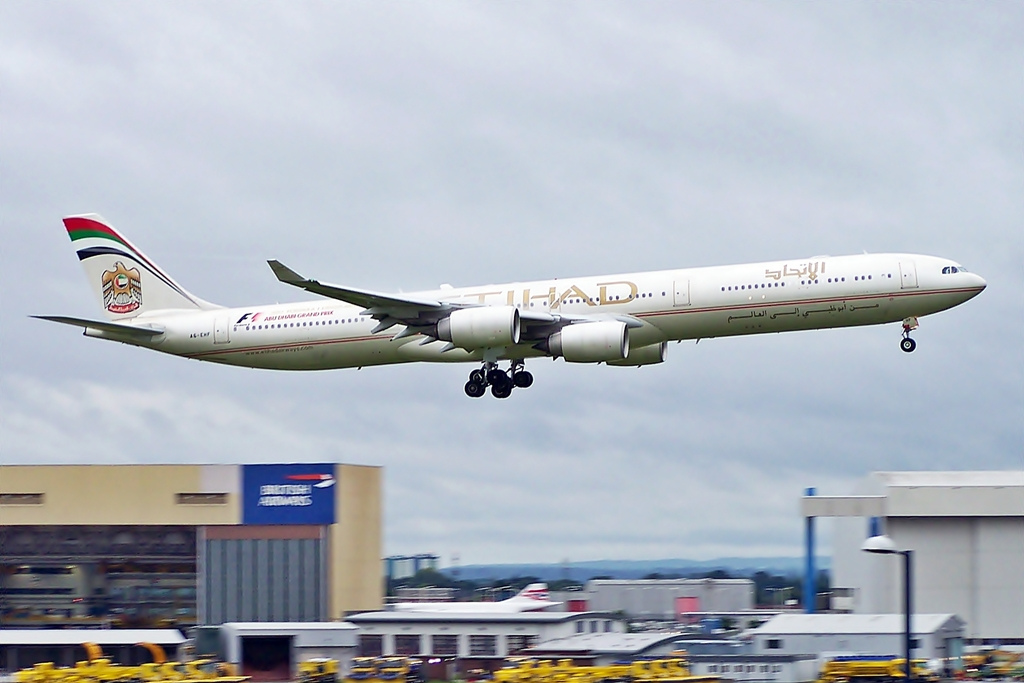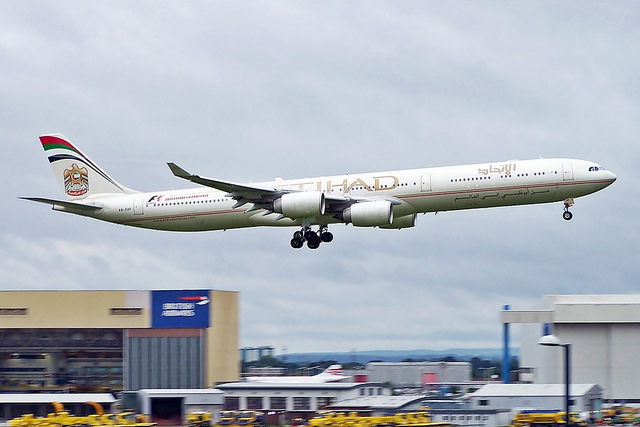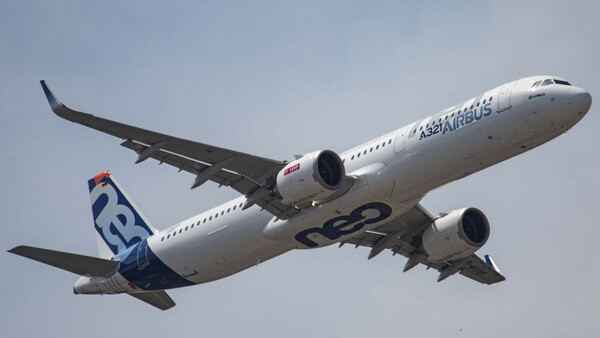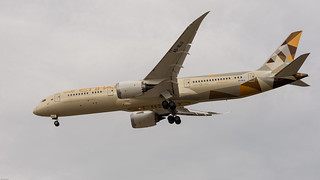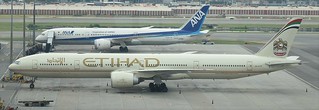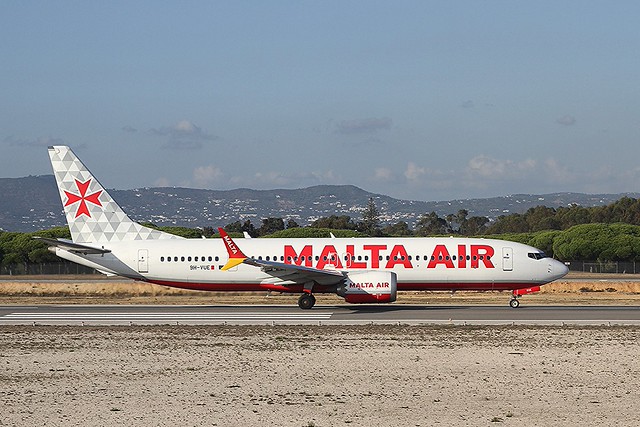Etihad A346 over Indian Ocean on Feb 3rd 2013, turbulence caused NAV ADR DISAGREE
Last Update: September 15, 2015 / 11:01:29 GMT/Zulu time
Incident Facts
Date of incident
Feb 3, 2013
Classification
Incident
Cause
Turbulence
Airline
Etihad Airways
Flight number
EY-460
Departure
Abu Dhabi, United Arab Emirates
Destination
Melbourne, Australia
Aircraft Registration
A6-EHF
Aircraft Type
Airbus A340-600
ICAO Type Designator
A346
The French BEA reported in their weekly bulletin that the authorities of the United Arab Emirates are investigating the serious incident.
The United Arab Emirates General Civil Aviation Authority (GCAA) released a preliminary reporty reporting that the aircraft was enroute at FL350 with autopilot 1 and autothrust engaged in instrument meteorological conditions with very light if any turbulence just about to transition from Colombo to Melbourne FIR. The weather radar was operating in automatic gain and manual tilt at -0.8 degrees and had painted a few green returns only when the radar began to paint green at about 80% of the area and further increased to about 80% yellow, the turbulence increased slightly. Suddenly the weather radar painted solid red about 2-3 mm around the aircraft symbol, the airspeed indication at the captain's (39,ATPL, 10,636 hours total, 1,094 hours on type) PFD reduced from 270 to 76 knots with the standby airspeed decreasing from 280 to 142 knots and the first officer's (25, CPL, 520 hours total, 324 hours on type) indication remaining constant, autopilot and autothrust systems automatically disconnected, the flight control law changed from normal to alternate removing several protections. The crew turned all anti-icing and probe and window heaters on, the airspeed indications normalised and the flight control law changed back to normal. About 50 seconds after the onset of the unreliable speed indication the captain re-engaged autothrust, the engine thrust was gradually reduced to return the aircraft to 0.75 mach as selected, 2 seconds later the aircraft however began to depart the assigned flight level and both captain's and standby airspeed indications again dropped while the first officer's speed indication remained stable. 26 seconds after the second onset the flight control law again changed to alternate and remained in alternate for the rest of the flight, "NAV ADR DISAGREE" and "ALTN LAW PROT LOST" indications arrived on the ECAM display, the autothrust disconnected for a second time. About 20 seconds after the second onset the captain's and standby speed indications returned their previous values and stabilised again. The captain handed control to the first officer, whose instruments appeared to be working without flaw, who in turn descended the aircraft back to FL350 from about FL358. The crew attempted to engage the autopilots however to no avail, neither autopilot 1 nor 2 could be engaged. The captain's instrument source was switched to air data reference 3. Attempts of the crew to communicate with Brisbane ATC via HF proved unsuccessful, the crew declared PAN via Controller Pilot Data Link Communications (CPDLC) to Melbourne ATC. The crew attempted to reset all flight control, flight management guidance and envelope computers in order to recover autopilot functionality however to no avail. The crew communicated that fact to their operations center, the operations center reported the right hand engine had reported high vibrations on the data link, the crew had not received any advisory on their ECAM but were able to see the high vibration indication on the engine page. In consultation with operations center the crew concluded they were no longer compliant with requirements to operate in reduced vertical separation minima airspace and sent an according message to Melbourne ATC via CPDLC requesting a diversion to Singapore. About 20 minutes later Melbourne ATC replied clearing the aircraft to Singapore. The aircraft descended to FL290 to leave RVSM airspace and diverted to Singapore for a safe landing on runway 02L.
On Sep 15th 2015 the GCAA released their final report concluding the probable causes of the serious incident were:
The Air Accident Investigation Sector determines that:
- The cause of the Unreliable Airspeed Indication Serious Incident was the intermittent obstruction of the Aircraft left side pitot probes due to, most probably, accumulations of ice crystals.
- The cause of the No. 2 engine N1 high vibration was the ingress of water through a gap created after the Omega Seal disbanded. The water froze to ice, which entered and passed through the spinner fairing and accreted under the annulus fillers.
The Investigation identifies the following contributing factors to this Unreliable Airspeed Indication Serious Incident:
- An incorrect weather radar tilt setting was selected. Accordingly, there was no predictive detection of the cumulonimbus cloud that may have enabled the crew to take avoidance maneuvers.
- The ambient temperature and the Aircraft altitude were outside the icing envelope parameters of the JAR specification and the manufacturer's design requirements for pitot probes.
The GCAA analysed with respect to the operation of the weather radar: "Before the Incident occurred, the Aircraft was cruising at FL350 in instrument meteorological conditions (IMC), within Cirrocumulus cloud of about 5,000 to 7,000 ft thickness and in light turbulence. The weather radar was showing almost no, or very few, green returns. The fixed time prognostic chart of the Indian Ocean, valid for 00:00 UTC, 3 February 2013, from FL250 to FL450, indicated an area of isolated embedded cumulonimbus clouds up to FL450 in the area where the Incident events commenced. The turbulence started to increase slightly, and the radar returns became stronger from mainly black to 80% green, then from green to 80% yellow. Suddenly, the radar returns showed 2-3 millimeters of solid red around the Aircraft symbol. The weather radar was manually set to GAIN: Auto and Radar Tilt to -0.8. Usually, setting the antenna tilt to about one degree will allow the flight crew to observe weather ahead and slightly below the aircraft. Since the weather radar was not equipped with an auto-tilt function, finding the optimum tilt setting manually, together with an optimum selection for the ND range, would require optimization in observing the most reflective part of the cloud and reducing ground clutter returns. This optimum tilt setting should be established before encountering the adverse weather, in order to have sufficient time for avoidance action. At the high altitude where the Aircraft was operating, the weather radar was displaying the cell which had ice particles, but the reflection of the ice particles was weak. The incorrect high tilt setting caused the radar to scan only the upper (less reflective) part of the cell. The antenna tilt setting was, most probably, so high that it could not depict the weather conditions ahead of the Aircraft accurately. Therefore, the Investigation believes that the antenna tilt and the ND range were not effectively managed by the flight crew to ensure sufficient monitoring of the weather conditions ahead. Also, the Investigation believes that the GAIN knob was not used in manual setting to analyze the weather ahead in-depth."
The GCAA analysed that there were three times that the airspeeds disagreed. The first encounter over a period of 16 seconds had always one ADC (#1, #3 mainly) disagree strongly with the others, each disagreement less than 10 seconds. The encounter resulted in the autoflight systems drop offline and the flight controls reverting to alternate law. Following the 16 seconds all three ADCs returned to normal operation, the flight control therefore returned to normal law and the autoflight systems could have been re-engaged, however, this was not attempted by the crew. The second encounter lasted for about a second on ADC #1 and had no effects. Regarding the third encounter the GCAA wrote:
The third fluctuation/unreliable airspeed indication occurred on CAS1 and CAS3. At the beginning of the third fluctuation, the CAS1 value reduced and was out of tolerance for more than 10 seconds, and the rejection of the ADR1 by the FCPC was latched through the monitoring of ADR airspeeds comparison. Then the CAS3 value reduced becoming out of tolerance until the FCPC rejected the remaining ADRs, 2 and 3.
The triggering of the message “NAV ADR DISAGREE” on the ECAM meant that the rejection of all three ADRs was latched by the FCPC, and the flight control reverted to Alternate Law, and it remained until the end of the flight, which made autopilot reengagement impossible.
The fluctuating or unreliable airspeed indications occurred on CAS1 and CAS3, while the CAS2 value was indicating normal steady indicated airspeed. This showed that, most probably, only the Aircraft left side pitot probes were temporarily obstructed by ice crystals.
During the period of the airspeed indication fluctuations, there were associated changes in the values of altitude and SAT. The changes were consistent with the fluctuations in the indicated airspeed, but were inconsistent with the physical flight which gave a clue that the displayed airspeeds were false. There were no anomalies of the angle of attack data, nor triggering of the stall warning system during the Incident.
This unreliable airspeed Incident was a temporary phenomenon due to contamination of the left side pitot probes, and disappeared after a short time. Following that, normal airspeed indications returned. Based on the systems descriptions, the related logics of the FMGES and FCS, these systems functioned as designed during the event.
The Investigation believes that the normal airspeed, altitude, AOA, and temperature readings during the ferry flight of the Aircraft to its base also proved that the airspeed fluctuations during the Incident flight were caused by temporary blockages of the left pitot probes, and no deficiencies in the systems related to airspeed, altitude, AOA, or temperature were found.
There was no evidence that the blockage of the left pitot probes was due to a malfunction in the probe heating systems, since the PFR data did not show any failure of the probe heat computers.
Regarding the engine vibrations the GCAA analysed: "The N1 vibration on No. 2 engine increased from 0.3 units to a maximum of 7.1 units after the fluctuating airspeed indications had returned to normal. Inspection of the No.2 engine revealed an Omega Seal disband. Based on the analysis of the engine manufacturer, the Investigation believes that the seal had sustained damage leaving a gap which allowed water ingress. The water or ice crystals entered and passed through the spinner fairing, and accreted under the annulus fillers creating an ice out-of-balance condition which led to the increase in N1 vibration, as shown in Figure 22. The use of engine anti-ice was apparently ineffective in dealing with the condition of the spinner fairing icing. The ECAM N1 vibration advisory message disappeared after the Aircraft started to descend from FL350. The reduction in N1 vibration was due to the ice melting as the Aircraft descended into warmer air. The Investigation believes that the vibration had disappeared during the descent at the moment when the combination of the air temperature, pressure, humidity and engine rotational speed were adequate for the ice to fragment, melt, and be propelled out of the engine."
Incident Facts
Date of incident
Feb 3, 2013
Classification
Incident
Cause
Turbulence
Airline
Etihad Airways
Flight number
EY-460
Departure
Abu Dhabi, United Arab Emirates
Destination
Melbourne, Australia
Aircraft Registration
A6-EHF
Aircraft Type
Airbus A340-600
ICAO Type Designator
A346
This article is published under license from Avherald.com. © of text by Avherald.com.
Article source
You can read 2 more free articles without a subscription.
Subscribe now and continue reading without any limits!
Read unlimited articles and receive our daily update briefing. Gain better insights into what is happening in commercial aviation safety.
Send tip
Support AeroInside by sending a small tip amount.
Related articles
Etihad A346 near Munich on Apr 16th 2016, loss of cabin pressure
An Etihad Airbus A340-600, registration A6-EHF performing flight EY-38 from Paris Charles de Gaulle (France) to Abu Dhabi (United Arab Emirates), was…
Etihad A21N near Kolkata on Oct 18th 2025, loss of cabin pressure
An Etihad Airways Airbus A321-200N, registration A6-LRA performing flight EY-222 from Abu Dhabi (United Arab Emirates) to Kolkata (India), was…
Etihad B789 at Melbourne on Jan 5th 2025, rejected takeoff due to EGT overtemp
An Etihad Boeing 787-9, registration A6-BLN performing flight EY-461 from Melbourne,VI (Australia) to Abu Dhabi (United Arab Emirates) with 289…
Etihad B789 at Moscow on Dec 3rd 2023, engine vibrations in icing conditions
An Etihad Boeing 787-9, registration A6-BLU performing flight EY-65 from Abu Dhabi (United Arab Emirates) to Moscow Sheremetyevo (Russia), was…
Etihad B789 at Hong Kong on Sep 7th 2019, veered off localizer and descended below safe height on ILS approach
An Etihad Boeing 787-9, registration A6-BLF performing flight EY-834 from Abu Dhabi (United Arab Emirates) to Hong Kong (China) with 168 passengers…
Etihad B773 near Abu Dhabi on Jul 11th 2021, engine shut down in flight
An Etihad Boeing 777-300, registration A6-ETP performing flight EY-245 from Dakha (Bangladesh) to Abu Dhabi (United Arab Emirates), was descending…
Newest articles
Malta Air B38M at Krakow on Dec 8th 2025, sun visor temporarily shuts engine down
A Malta Air Boeing 737-8 MAX on behalf of Ryanair, registration 9H-VUE performing flight FR-3505 from Krakow (Poland) to Milan Bergamo (Italy), was…
Hokkaido AT42 at Okushiri on Dec 16th 2025, problems with left aileron
A Hokkaido Air System Avions de Transport Regional ATR-42-600 on behalf of JAL Japan Airlines, registration JA13HC performing flight JL-2891 from…
Subscribe today
Are you researching aviation incidents? Get access to AeroInside Insights, unlimited read access and receive the daily newsletter.
Pick your plan and subscribePartner

ELITE Simulation Solutions is a leading global provider of Flight Simulation Training Devices, IFR training software as well as flight controls and related services. Find out more.
SafetyScan Pro provides streamlined access to thousands of aviation accident reports. Tailored for your safety management efforts. Book your demo today
AeroInside Blog
Popular aircraft
Airbus A320Boeing 737-800
Boeing 737-800 MAX
Popular airlines
American AirlinesUnited
Delta
Air Canada
Lufthansa
British Airways
